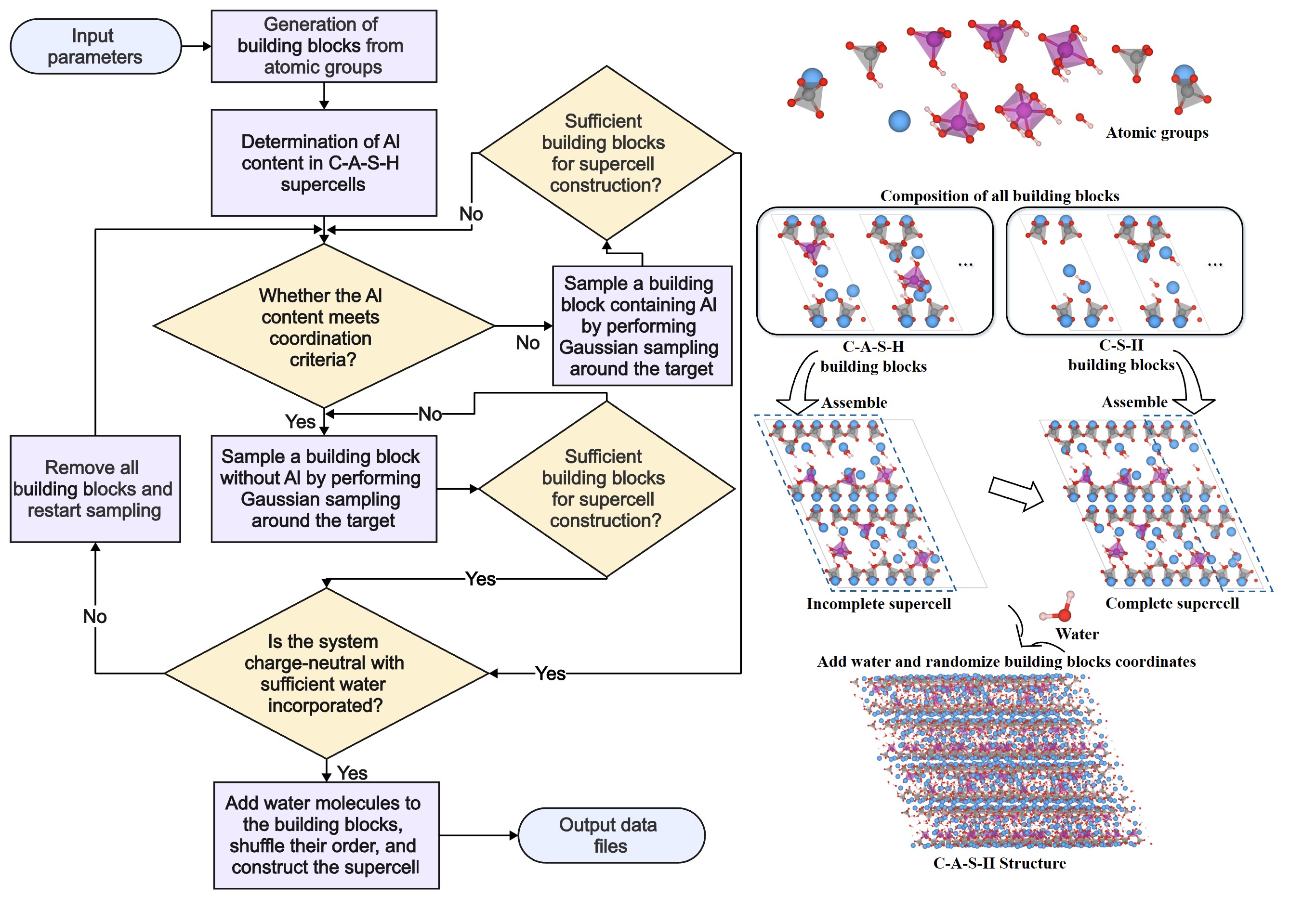Recently, the research team led by Assistant Professor Yunjian Li from the Department of Engineering Science, Faculty of Innovation Engineering, Macau University of Science and Technology (MUST), has made a significant breakthrough in the field of green and low-carbon building materials. The team proposed a high-throughput atomistic modeling framework that systematically analyzes the nanostructure and mechanical mechanisms of calcium aluminate silicate hydrate (C-A-S-H), a key hydration product in environmentally friendly cements. The related research has been published in the internationally renowned journal Nature Communications (Impact Factor: 15.7) under the title “High-throughput atomistic modeling of nanocrystalline structure and mechanics of calcium aluminate silicate hydrate.”
Cement is the most widely used construction material worldwide and serves as a fundamental pillar of modern urban infrastructure. However, the conventional cement industry is also a major contributor to global greenhouse gas emissions, accounting for approximately 7% of total CO₂ emissions. In light of global carbon neutrality goals, improving the sustainability of cement-based materials has become a key focus of international research. In recent years, novel aluminum-rich cementitious binders have attracted growing attention for their strong potential in CO₂ sequestration and hazardous substance encapsulation. Among them, C-A-S-H is the primary hydration product, directly influencing the long-term durability and structural stability of green cement. Nonetheless, due to its complex chemical composition and highly disordered nanostructure, the field has long lacked accurate atomic-scale models that reflect experimentally observed features—hindering the optimal design and performance tuning of sustainable cement formulations.
To address this challenge, Prof. Li’s team independently developed an automated structure generation program, CASHgen, which enables the efficient construction of atomic models of C-A-S-H with varying Ca/Si and Al/Si ratios. The generated structures have been validated to match key experimental features such as mean chain length, water-to-silicon ratio, interlayer spacing, density, bond lengths, and atomic coordination. By integrating molecular dynamics simulations, the team achieved accurate predictions of C-A-S-H structural and mechanical properties at the nanoscale across a broad composition range (Ca/Si = 1.3–1.9, Al/Si = 0–0.15), revealing clear structure–composition–property correlations at the atomic level.
The study shows that crucial performance parameters such as density, interlayer spacing, and elastic modulus are closely related to chain length, Ca–OH/Ca content, and the Ca/Si and Al/Si ratios. Specifically, C-A-S-H exhibits optimal mechanical performance when the Ca/Si ratio is around 1.5; excessive calcium content leads to silicate chain fragmentation and stiffness reduction. In contrast, aluminum incorporation enhances silicate chain polymerization, increasing the mean chain length and significantly improving structural stiffness and stability.
This research provides a reliable and scalable approach to atomic modeling of C-A-S-H, filling a critical gap in the atomic-level understanding of green cementitious materials. The findings not only deepen insight into the nanoscale mechanisms of cement hydration products but also lay the foundation for the construction of a materials genome database and the bottom-up, atomic-level design and optimization of sustainable construction materials.

The flowchart outlines the steps for automated generation of a C-A-S-H structure.

Mechanical properties of C-A-S-H at varying Ca/Si and Al/Si ratios.
The first and corresponding author of the paper is Assistant Professor Yunjian Li of MUST. The second author is Cheng Chen, a current master’s student at MUST. The study also benefited from insightful discussions and guidance from Chair Professor Zongjin Li of MUST and Assistant Professor Zhenning Li of the University of Macau. The research was jointly supported by the Macao Science and Technology Development Fund (FDCT) (Grant Nos. 0074/2023/RIB3 and 0139/2024/RIB2) and the Macau University of Science and Technology Faculty Research Grant (Grant No. FRG-24-085-FIE). This work showcases MUST’s original capabilities and growing international influence at the intersection of smart green building materials, applied physics, and computational chemistry.





